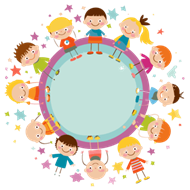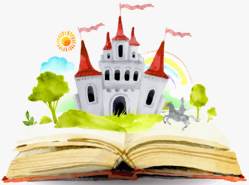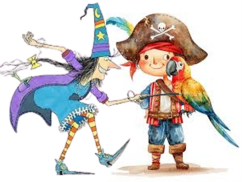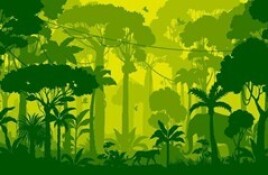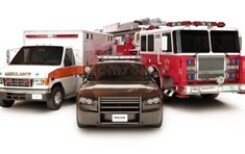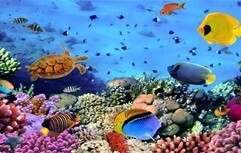
Rainbow Class Curriculum Overview 2025/26
| Topics | |||||||||||||
|
Term 1 All About Me!
|
Term 2 Terrific Tales
|
||||||||||||
|
During this topic we will be learning all about ourselves and each other, our similarities and differences, our likes and our dislikes. We will complete a short project on colour to share our artistic ability and dive into the past to investigate an all time favourite topic – dinosaurs! |
For this topic we will explore a range of stories from traditional tales, tales from space and even tales about Santa. We will learn how to create story maps, write letters, problem solve and even learn about astronauts. We will even tell our own Christmas tale at our Nativity! |
||||||||||||
| Specific Areas | |||||||||||||
| Areas of learning | Term 1 | Term 2 | |||||||||||
|
Communication and language Listening, Attention and Understanding Speaking
|
Curriculum content and skill development
|
Children will be able to: Find their seat on the carpet. Listen to the adults in the classroom. Feel confident to speak to the adults in the classroom. Follow short instructions. Begin to answer questions. Enjoy listening to stories. Listen to new vocabulary linked to stories or key topics. Answer questions using short utterances. Retell key events and stories. Understand the class rules and beginning to follow them.
|
|||||||||||
|
Physical development Gross Motor Skills Fine Motor Skills
|
Curriculum content and skill development
|
PE – BEAM and Introduction to PE
|
PE – Gymnastics
|
||||||||||
|
Fine Motor Skills Children will be: Developing and working towards a comfortable pencil grip. Developing a preference towards a dominant hand. Able to make snips in paper with scissors. Introduced to a variety of tools including pencils, pens, paintbrushes, and tweezers. Introduced to cutlery.
Gross Motor Skills Children will be: Introduced to sitting correctly on the carpet or at the table for a short amount of time. Introduced to the range of bikes, trikes and scooters and know how to use them. Beginning to negotiate space safely and work cooperatively with others. Beginning to control their body when performing a sequence of movements.
|
|||||||||||||
|
Personal, social and emotional development Self-Regulation Managing Self Building Relationships
|
Curriculum content and skill development
|
Self-Regulation – My Feelings |
Building Relationships – Special Relationships |
||||||||||
|
Children will be able to: Show perseverance and confidence. Share and take turns. Identify feelings. Express their feelings and consider the feelings of others. Identify and moderate their own feelings socially and emotionally. Understand how to behave appropriately in different scenarios.
|
Children will be able to: Talk about their families. Understand that all families are valuable and special. See themselves as a valuable individual. Think about the perspectives of others. Talk about people that hold a special place in children’s lives. Understand why it is important and develop strategies to share and cooperate with others. Understand that it is ok to like different things. Share their interests with the group. Explore diversity through thinking about similarities and differences. Work and play cooperatively and take turns with others. |
||||||||||||
|
Prime Areas |
|||||||||||||
|
Areas of learning |
Term 1 |
Term 2 |
|||||||||||
|
Literacy Comprehension Word Reading Writing
|
Curriculum content and skill development
|
Children are assessed every 6 weeks. Phonics and word reading Children will be: Introduced to the structure of a Phonics lesson. Introduced to the Read, Write, Inc phonics scheme and work through the Set 1 sounds in the correct sequence. Able to hear the initial sounds in words. Beginning to read CVC words using the sounds taught so far. Reading Phonics books in line with their progress with the Phonics scheme. Sing the alphabet song. |
|||||||||||
|
The Baseline assessment is carried out within the first 6 weeks of learning. Comprehension Children will be able to: Begin to recall key facts of stories. Begin to take information from pictures in the story. Begin to make up stories from picture books. Begin to form prediction about what might happen in the story. State what happens in the beginning and at the end. Be introduced to rhyming words. Begin to answer questions. Learn what their name looks like. Begin to role play stories.
|
|||||||||||||
|
Writing Children will be: Introduced to the correct letter formation. Introduced to sitting at the table. Continuing to use mark making equipment. Encouraged to use the correct grip when using mark making equipment. Developing a preference towards a dominant hand. Introduced to writing the numerals 1-3. Practicing writing their name. Practising writing the initial sounds in words and CVC words with support. |
Writing Children will be able to: Copy some simple shapes and patterns. Begin to form some letters. Use a pen or pencil using the correct grip. Write their first name without a visual prompt. Write the initial sounds in words. Write a CVC word using sounds taught so far. Write a simple label with adult support. |
||||||||||||
|
Mathematics Number Numerical Patterns
|
Curriculum content and skill development
|
The Baseline assessment is carried out within the first 6 weeks of learning. Getting to know you! Match, sort and compare Talk about measure and patterns It's me 1, 2, 3
|
Circles and triangles 1, 2, 3, 4, 5 Shapes with 4 sides
|
||||||||||
|
Our school follows the scheme White Rose Maths which links directly to EYFS framework and the non-statutory Development Matter criteria. It progressively builds the children’s knowledge and understanding in 3-week units of learning.
|
|||||||||||||
|
Understanding the world Past and Present People, Cultures and Communities The Natural World
|
Curriculum content and skill development
|
History: Our Family, Dinosaurs Geography: Introduction to Forest School Science: Liquids, Dinosaurs, Fizzing, Food and Hygiene, Bugs RE: CREATION - Why is the word ‘God’ so important to Christians? |
History: Famous astronauts Geography: Cold countries, maps Science: Seasons, The Weather, Materials, Animals, My Body, Food and Hygiene, Bugs RE: INCARNATION - Why do Christians perform Nativity plays at Christmas? |
||||||||||
|
History Children will be able to: Learn about significant famous individuals from the past including pirates and astronauts. Understand how objects age over time e.g. fossils, shipwrecks. Understand how objects and places have differences and similarities to what they looked like in the past, e.g. transport, seaside holidays. Learn about the people around them and their roles in society. Geography Children will be able to: Learn about and explore their immediate environment. Learn about and investigate a variety of locations around the world including their environment, weather, animals, etc. Begin to learn about and compare human and physical features, and man-made and naturals materials. Learn to read and follow maps of their immediate environment. Learn about the seasons and seasonal change. |
|||||||||||||
|
Expressive Art and Design Creating with materials Being Imaginative and Expressive
|
Curriculum content and skill development
|
Art: Exploring colour, paint, clay, observational drawings, portraiture. DT: cooking – fruit salad, clay, construction – 3 little pigs houses. Music: Me!
|
Art: collage, instructional drawing, printing, clay, sculpture DT: cooking – porridge, construction – stable for baby Jesus, bridges, spaceships. Music: My Story
|
||||||||||
|
Art Children will be able to: Explore a variety of materials including paint, oil pastels, plasticine, tissue paper, play dough, felt and many more! Learn the names of different colours and the difference between primary and secondary colours. Learn how to make secondary colours using primary colours. Layer materials to make an effective collage. Manipulate malleable materials including play dough and clay. Use tools safely to create different effects on materials. Complete observational and instructional drawing to add greater levels of detail. Create art on ICT. Explore different ways of joining fabrics. Learn that people that create art are called artists. Learn about an artist to inspire their art work.
|
|||||||||||||
| Topics | |||||||||||||
|
Term 3
|
Term 4
|
||||||||||||
|
Witches, Potions, Pirates and Treasure For this project, we will explore the world of make-believe and learn all about different character including witches, dragons and pirates. We will make potions, draw maps, design and make dragons and even search for treasure. Our investigation will also take us into the past to learn about famous and dangerous pirates. |
Jungle Journey and Farmyard Fun For this topic, we will enjoy investigating the environment of the jungle compared the to the surroundings of farm. We will learn facts about a variety of animals as well as understanding where food comes from and how it grows. |
||||||||||||
| Specific Areas | |||||||||||||
| Areas of learning | Term 3 | Term 4 | |||||||||||
|
Communication and language Listening, Attention and Understanding Speaking
|
Curriculum content and skill development
|
Children will be able to: Navigate all areas of the classroom. Be confident to speak to adults outside of the classroom. Follow 2 or 3 step instructions. Be confident to answer questions and begin to ask questions. Enjoy listening to stories and begin to ask questions about its content. Listen to and begin to use new vocabulary in groups discussions with prompts from an adult. Answer questions using simple sentences. Retell events and stories with a beginning, middle and end. Understand and the class rules and follow them.
|
|||||||||||
|
Physical development Gross Motor Skills Fine Motor Skills |
Curriculum content and skill development
|
PE – Ball Skills |
PE – Fundamentals |
||||||||||
|
Fine Motor Skills Children will be: Beginning to use a comfortable pencil grip with good control. Making a clear preference towards a dominant hand. Able to cut and follow a straight line using scissors. Continuing to practise with a variety of tools and will be introduced to hammers, syringes and pipettes. Encouraged to cut up their own foods using the correct cutlery with support.
Gross Motor Skills Children will be able to: Sit correctly at the table or on the carpet. Safely use bikes, trikes and scooters. Move in a variety of ways including skipping, hopping, jumping, running, climbing, crawling, etc. Practising using balls in different ways, such Practise negotiating space safely and work cooperatively with others. |
|||||||||||||
|
Personal, social and emotional development Self-Regulation Managing Self Building Relationships
|
Curriculum content and skill development
|
Managing Self – Taking on Challenges |
Self-Regulation – Listening and follow instructions |
||||||||||
|
Children will be able to: Identify and moderate their own feelings socially and emotionally. Understand why we have rules. Understand the importance of resilience and persistence in the face of challenges. Develop confidence in their own ability to solve problems. Work together as a group to overcome challenges. Communicate effectively with others. Understand the difference between right and wrong. Be confident to try new activities and show independence, resilience and perseverance in the face of challenges. |
Children will be able to: Understand why it is important to listen carefully. Understand why it is important to tell the truth and think about the feelings of others. Follow instructions involving several ideas or actions. Give simple instructions. Persevere when things are difficult. Give focused attention to others. Show independence, resilience and perseverance in the face of challenge Understand the difference between right and wrong. Show sensitivity to their own and to others’ needs. |
||||||||||||
|
Prime Areas |
|||||||||||||
|
Areas of learning |
Term 1 |
Term 2 |
|||||||||||
|
Literacy Comprehension Word Reading Writing
|
Curriculum content and skill development
|
Children are assessed every 6 weeks. Phonics and word reading Children will be: Revising and embedding the set 1 sounds and beginning to move on to the set 2 sounds. Able to hear the initial and last sounds in words. Able to segment and blend simple CVC words and beginning to blend CVCC and CCVC words. Beginning to read nonsense words to monitor blending and segmenting ability. Reading Phonics books in line with their progress with the Phonics scheme. Introduced to simple common exception words, e.g. I, a, me, be, he, she, we, the. Able to follow the alphabet as we sing the song. |
|||||||||||
|
Comprehension Children will be able to: Recall some of the key facts of stories and explain what happens in the beginning, middle and end. Find information about pictures in the story. Form predictions of how a story will end. Think of a greater range of rhyming words. Be confident to answer questions and begin to ask questions. Introduce the title, author, illustrator and blurb on books. Find their name card or name of the register. Begin to confidently take on the role of different characters from stories. |
|||||||||||||
|
Writing Children will be able to: Making a clear preference towards a dominant hand. begin to form letters from memory. Confidently pick up and use a pen or pencil. Write the numerals 4-8. Write a simple sentence with adult support containing a CVC word. Practise using full stops, finger spaces and writing on the line. Practise writing a simple label with adult support. |
Writing Children will be able to: Draw closed shapes with continuous lines and use these to represent objects. Write most letters correctly from memory. Write the numerals 9 and 10. Write some capital letters. Write a simple sentence containing a CVC words with little support. Write simple labels independently.
|
||||||||||||
|
Mathematics Number Numerical Patterns
|
Curriculum content and skill development
|
Alive in 5 Mass and capacity Growing 6, 7, 8 Length, height and time |
Continue Length, height and time Building 9 and 10 Explore 3-D shapes
|
||||||||||
|
Our school follows the scheme White Rose Maths which links directly to EYFS framework and the non-statutory Development Matter criteria. It progressively builds the children’s knowledge and understanding in 3-week units of learning. |
|||||||||||||
|
Understanding the world Past and Present People, Cultures and Communities The Natural World
|
Curriculum content and skill development
|
History: Famous pirates, shipwrecks Geography: maps, Human and Physical Features Science: Properties of Materials, Materials, Planes and Boats, Animals, Magnets RE: New Testament Stories - Which stories are special and why? Chinese New Year |
History: - Geography: Rainforests, Forest School Science: Liquids, Fizzing, Food and Hygiene RE: SALVATION - Why do Christians put a cross in an Easter Garden
|
||||||||||
|
Geography Children will be able to: Learn about and explore their immediate environment. Learn about and investigate a variety of locations around the world including their environment, weather, animals, etc. Begin to learn about and compare human and physical features, and man-made and naturals materials. Learn to read and follow maps of their immediate environment. Learn about the seasons and seasonal change. Science Children will be able to: Learn about different states of matter. Learn about the properties of different materials. Form predictions and see reactions of combined materials. Learn about a variety of animals, their groups and their habitats. Observe and monitor the growth of plants. Understand how whether is different in each of the seasons. Understand the importance of a healthy lifestyle including personal hygiene and diet. |
|||||||||||||
|
Expressive Art and Design Creating with materials Being Imaginative and Expressive
|
Curriculum content and skill development
|
Art: exploring different materials, instructional drawing, Art on ICT. DT: tools – forest school, construction – making boats, making a dragon. Music: Everyone! |
Art: clay, drawing, painting, weaving DT: Cooking – preparing an Easter picnic. Music: Our World |
||||||||||
|
DT Children will be able to: Design, select materials, make and evaluate their creations. Explore a large variety of materials. Explore different ways of connecting materials. Learn how to safely use a variety of tools. Prepare food to eat. Explore successful designs (e.g. boats that float) and discuss things they would change next time. Work as a team to create large scale construction projects. Work in pairs or groups to complete projects. Share their creations with the class, explaining what they have made and why.
|
|||||||||||||
| Topics | |||||||||||||
|
Term 5
|
Term 6
|
||||||||||||
|
On the go! For this topic, we will travel the world and dive into the past to explore transport and travel. We will also investigate emergency services transport and learn more about the people in our community that help us. |
Sunshine Adventures For this project we will be transported from the African Savannah to the Great Barrier reef, and finally to the beaches of England. We will be taught about a variety of animals, environments and habitats. |
||||||||||||
| Specific Areas | |||||||||||||
| Areas of learning | Term 5 | Term 6 | |||||||||||
|
Communication and language Listening, Attention and Understanding Speaking
|
Curriculum content and skill development
|
Children will be able to: Navigate all area of the classroom and the school. Be confident to speak to all adults and peers in the school. Follow instructions with multiple steps. Be confident to ask and answer questions within the classroom. Be confident when listening to stories to question and take information from the texts. Listen to and begin to use and write new vocabulary independently. Answer questions using increasingly complex sentences which enquire to find out more. Retell events and stories using a greater level of detail. Understand the class rules and the rules throughout the school.
|
|||||||||||
|
Physical development Gross Motor Skills Fine Motor Skills |
Curriculum content and skill development
|
PE – Dance |
PE – Games |
||||||||||
|
Fine Motor Skills Children will be: Consistently uses a dynamic tripod grip when drawing and writing. Consistently using a preferred hand for writing, cutting, and for using other tools. Able to cut a curved line and circular shapes using scissors. Confident when using a variety of tools. Encouraged to cut up their own foods using the correct cutlery. Able to effectively perform a range of fine motor activities such as threading beads onto string, fastening and unfastening buttons, zips, puzzles and towers.
Gross Motor Skills Children will be able to: Sit correctly at the table or on the carpet comfortably until their task is completed. Safely use bikes, trikes and scooters. Follow instructions to move in a variety of ways and alternate between movements. Safely carry and place down larger equipment, such as planks and crates. Control their body when performing a sequence of movements. Use balls in different ways, such Negotiate space safely and work cooperatively with others. |
|||||||||||||
|
Personal, social and emotional development Self-Regulation Managing Self Building Relationships
|
Curriculum content and skill development
|
Building Relationships – My family and friends |
Managing Self – My Wellbeing |
||||||||||
|
Children will be able to: Understand that we all have different beliefs and celebrate special times in different ways. See themselves as a valuable individual. Think about the perspectives of others. Understand why sharing is important. Build constructive and respectful relationships. Understand the characteristics that make a good friend. Think about why it might be difficult for others to be a good friend all the time. Consider why it is important to support each other by being kind. Learn how to help, listen to and support others when working in a team. Form positive attachments with others. Work and play cooperatively and take turns with others. |
Children will be able to: Learn about the importance of exercise. Explore how exercise affects different parts of the body. Understand why it is important to be able to take care of ourselves by completing independent tasks related to health, well-being and hygiene. Know and discuss the factors that support their overall health and well-being. Understand what it means to eat healthily. Understand the importance of healthy food choices. Explore what it means to have a balanced diet. Be confident to try new activities. Explain the reasons for rules, know right from wrong and try to behave accordingly. Give focused attention to others.
|
||||||||||||
|
Prime Areas |
|||||||||||||
|
Areas of learning |
Term 5 |
Term 6 |
|||||||||||
|
Literacy Comprehension Word Reading Writing
|
Curriculum content and skill development
|
Children are assessed every 6 weeks. Phonics and word reading Children will be: Revising and embedding the set 1 sounds and learning set 2 sounds. Able to hear the sounds in words and sound them out in the correct order. Able to segment and blend CVC, CCVC, and CVCC words. Able to read nonsense words to monitor blending and segmenting ability Reading Phonics books in line with their progress with the Phonics scheme. Introduced to additional common exception words, e.g. my, by, said, put. |
|||||||||||
|
Comprehension Children will be able to: Recall and sequence a story in the correct order. Form logical predictions of what a story might be about and how it may end. Be confident to ask and answer questions within the classroom. Think of and write rhyming words. Indicate where to find the title, author, illustrator and blurb on books. Confidently role play a story to their peers. |
|||||||||||||
|
Writing Children will be able to: Draw with increased control, accuracy and care. Write in an increasingly fluent and efficient style. Consistently using a preferred hand for writing, Confidently recall individual sounds and write letters from memory. Write the some of the teen numbers. Write CVC, CCVC and CVCC words with little support. Write labels and captions independently.
|
Writing Children will be able to: Begin to draw with increasing complexity and adds details to pictures. Fluently recall individual sounds and write letters from memory. Write sentences independently using phonetically plausible attempts at spelling. Write labels and captions independently.
|
||||||||||||
|
Mathematics Number Numerical Patterns
|
Curriculum content and skill development
|
To 20 and beyond How many now? Manipulate, compose and decompose |
Sharing and grouping Visualise, build and map Make connections |
||||||||||
|
Our school follows the scheme White Rose Maths which links directly to EYFS framework and the non-statutory Development Matter criteria. It progressively builds the children’s knowledge and understanding in 3-week units of learning. |
|||||||||||||
|
Understanding the world Past and Present People, Cultures and Communities The Natural World
|
Curriculum content and skill development
|
History: People in our community, transport in the past Geography: Transportation and travel, Plants and growth Science: Exercise, My Body, Food and Hygiene, Animals, Plants RE: Old Testament Stories -Which stories are special and why? |
History: seaside holidays past and present, Shipwrecks, Geography: Forest School, Hot countries/ Contrast another country, maps oceans and sea life, visit to a beach, map to the village library Science: The seasons, The Weather, Liquids, Habitats, Animals, Flowers and Trees RE: World Faith Stories - Which stories are special and why?
|
||||||||||
|
Science Children will be able to: Learn about different states of matter. Learn about the properties of different materials. Form predictions and see reactions of combined materials. Learn about a variety of animals, their groups and their habitats. Observe and monitor the growth of plants. Understand how whether is different in each of the seasons. Understand the importance of a healthy lifestyle including personal hygiene and diet. RE Children will be able to: Learn about different world religions. Learn that people who follow different religions are referred to by different names i.e. Christians, Jews, Muslims and Sikhs. Learn that stories about God and Jesus come from the Bible. Learn that Christians worship God in a church. Listen to key stories from the Bible including the story of creation, the birth of Baby Jesus and the story of Easter. Learn key vocabulary including disciples, Palm Sunday, manager, etc. Know about different religions festivals and celebrations. |
|||||||||||||
|
Expressive Art and Design Creating with materials Being Imaginative and Expressive
|
Curriculum content and skill development
|
Art: observational drawing, textiles, portraiture. DT: large scale construction, making a car. Music: Big Bear Funk
|
Art: Investigating artists – Seurat, observational art, clay. DT: clay – African animals. Music: Reflect, Rewind and Replay
|
||||||||||
|
Music Children will be able to: Find the pulse of music and recreate this using body percussion or instruments. Explore and safely use a variety of instruments including drums, glockenspiels, tambourines, maracas, triangles, and bells. Follow a beat using instruments. Create and perform their own beats using instruments. Work together to create music. Learn and sing a range of nursery rhymes. Dance to music. Explore pitch and tone.
|
|||||||||||||
Download EYFS Overview Documents
EYFS Curriculum Overview (PDF version of sections above)

